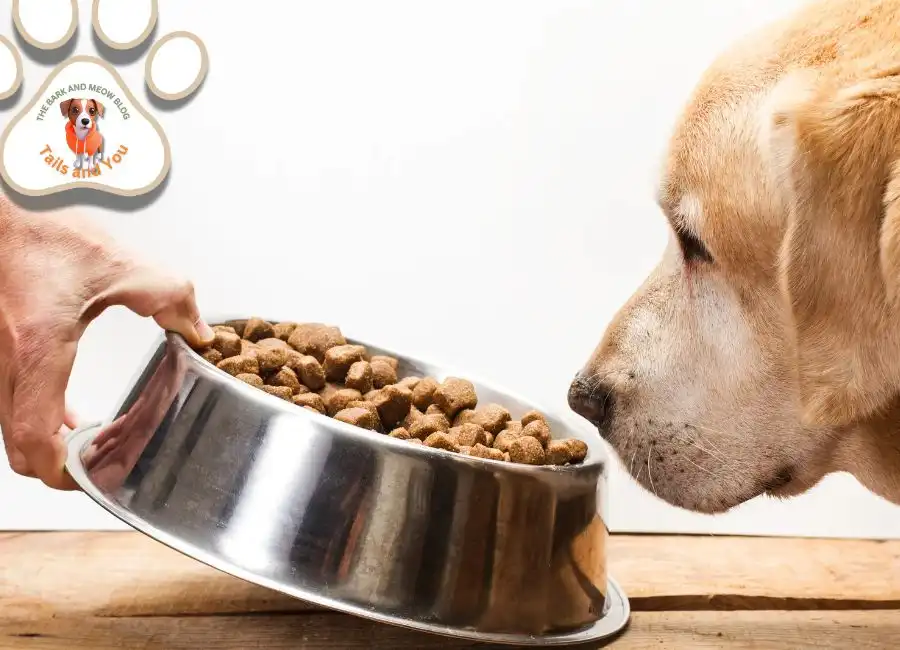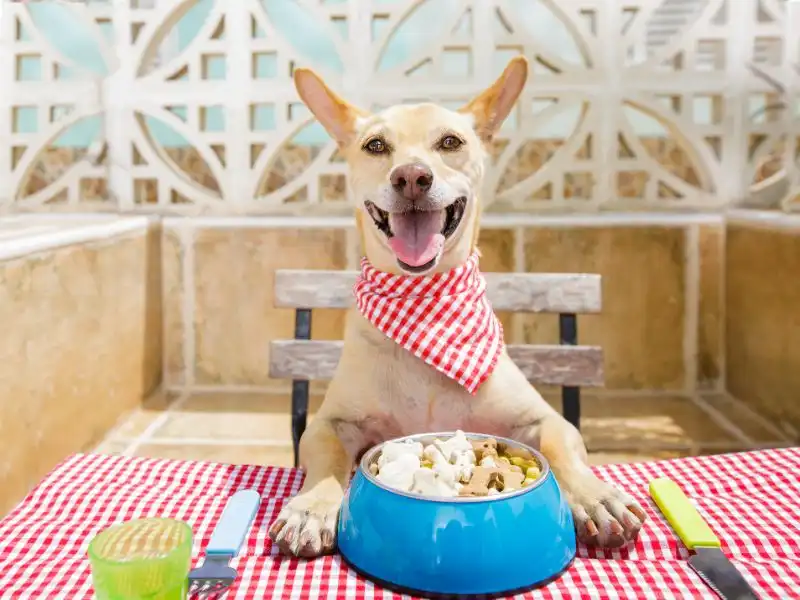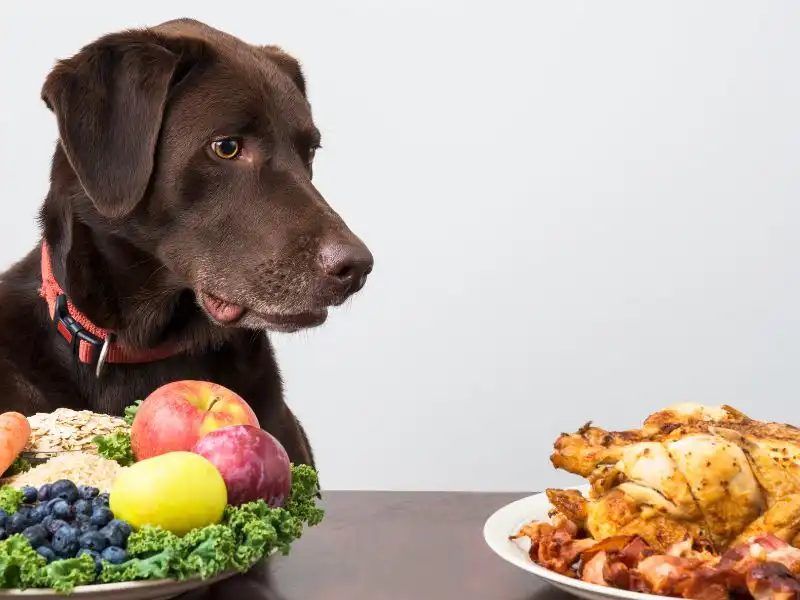In a world where our furry companions hold a special place in our hearts, every wag of their tail and slobbery kiss becomes a cherished moment. Yet, amidst all the love, there’s one aspect that often gets overlooked – what’s on their dinner plate. In this culinary exploration, we unravel the mystery behind why it truly matters if your dog likes their food.
Nutritional Nirvana
Just like us, dogs need a well-balanced diet to thrive. However, getting your pup to devour their kibble isn’t just about meeting nutritional requirements; it’s about ensuring they relish every bite.
Ensuring your dog enjoys their food goes beyond merely ticking off the nutritional checklist. Picture a scenario where every mealtime feels like a tail-wagging celebration, and your furry friend eagerly awaits the gastronomic delight you serve them. This anticipation is not just about sustenance; it’s about creating an experience that contributes to their overall well-being.
Delving into the world of canine nutrition reveals a myriad of flavours and textures that can cater to your dog’s specific tastes. The joy that comes from a well-enjoyed meal is not just a matter of necessity; it’s a celebration of the bond you share with your furry friend.
The Bonding Buffet
Food has an uncanny ability to forge connections, and the same holds true for our four-legged friends. Sharing moments over a bowl of scrumptious goodness creates a bond that transcends the ordinary.
Think about the shared joy of a pup eagerly awaiting mealtime, the tail-wagging frenzy that ensues, and the heartfelt gratitude in their eyes as they savour each bite. It’s not just about sustenance; it’s about shared joy, creating memories, and strengthening the unspoken language between you and your canine companion.
Creating a bonding buffet involves more than just setting a bowl of food in front of your dog. It’s about being present during mealtime, engaging with your pup, and turning a routine task into a moment of connection. The more your dog associates’ positive experiences with mealtime, the stronger your bond becomes.
Tailoring Taste For Health
A discerning palate isn’t just a matter of luxury; it can be a vital tool for monitoring your dog’s health. Changes in appetite, aversions to certain foods, or newfound cravings can serve as early indicators of underlying health issues.
Imagine your dog suddenly turning away from their usual food or showing a newfound interest in a specific ingredient. These subtle shifts in behaviour could be early warning signs that something isn’t quite right. Paying attention to your pup’s food preferences becomes more than just a culinary choice; it becomes a proactive approach to their well-being.
Tailoring taste for health involves being attuned to your dog’s reactions to different foods. It’s not about indulging every whim but about understanding the nuances of their preferences and using that knowledge to detect potential health issues early on.
Mental Munchies
Canine culinary satisfaction goes beyond the physical. Mental stimulation is a crucial aspect of a dog’s well-being. Introducing variety in their diet and engaging their taste buds with different textures and flavours isn’t just a gastronomic adventure – it’s a mental workout that keeps them sharp, happy, and content.
Consider your dog’s mind as a hungry explorer, constantly seeking new challenges and experiences. Just like humans, dogs can become bored with a monotonous diet. By incorporating variety into their meals, you’re not just satisfying their taste buds; you’re providing mental stimulation that keeps their cognitive abilities sharp.
Mental munchies involve introducing new ingredients, textures, and even puzzle feeders that encourage your dog to think and problem-solve while enjoying their meal. This mental workout is an investment in their overall happiness and cognitive health.
A Feast for Happiness
Picture this: a contented dog, tail wagging, eyes gleaming with satisfaction after a hearty meal. Their happiness is contagious and contributes to a harmonious household. Investing time and effort into understanding your dog’s food preferences isn’t just about culinary indulgence; it’s a commitment to their joy and well-being.
The joy that radiates from a happy, well-fed pup is a testament to the impact of their culinary experience. It’s not just about meeting their basic needs; it’s about creating an environment where they thrive emotionally and physically. A feast for happiness involves more than serving a bowl of food; it’s about crafting an experience that resonates with your dog’s unique preferences and brings joy to both them and you.
In the grand tapestry of canine companionship, the thread of food weaves a narrative of love, health, and happiness. So, the next time you fill your dog’s bowl, consider it not just a routine task but a culinary gesture that speaks volumes. Because, in the world of your pup, a meal well-enjoyed is not just a necessity – it’s a celebration of life, love, and the shared moments that make your bond unbreakable.
Frequently Asked Questions (FAQs)
Q: How can I determine if my dog likes their food?
A: Pay attention to their enthusiasm during mealtime. A wagging tail, eager behaviour, and finishing their meal promptly are signs of contentment. Experiment with different flavours and observe their reactions.
Q: Is it okay to change my dog’s food often?
A: While variety is beneficial, sudden changes can upset your dog’s stomach. Gradually introduce new foods to avoid digestive issues. Monitor their response to ensure they enjoy the transition.
Q: Can a picky eater be a sign of a health problem?
A: Yes, changes in eating habits can signal health issues. Consult your vet if your dog becomes consistently picky or shows a sudden aversion to their regular food.
Q: Are homemade dog meals a good option for catering to my dog’s taste?
A: Homemade meals can be a great option, but ensure they meet nutritional requirements. Consult your vet to create a balanced diet that aligns with your dog’s taste preferences.
Q: How can I provide mental stimulation during mealtime?
A: Use puzzle feeders, rotate toys, or hide food in a safe environment. This engages your dog’s mind, turning mealtime into a stimulating and enjoyable experience.




